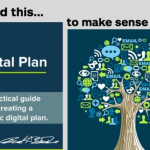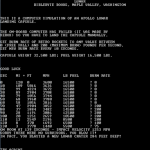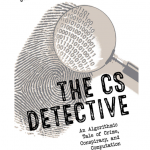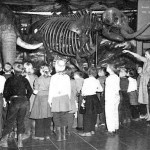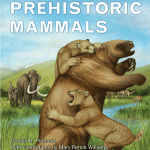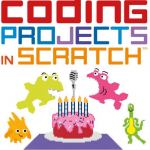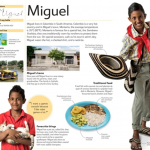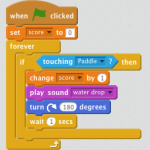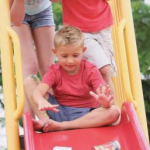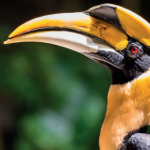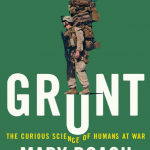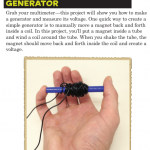book review
Karen Stollznow has edited this book: Would You Believe It?: Mysterious Tales From People You'd Least Expect, and you will find my chapter on page 112.
This is a great idea for a book. Suppose Susan Blackmore told you she had an out of body experience? Or that Don Prothero had an alien abduction story for you? Or that I claimed I had once hunted down and captured a ghost? Would you believe it??? Indeed.
You would probably be skeptical if any of the 30+ established skeptics who authored chapters in this book told you that they had a paranormal, psychic, or otherwise impossible experience…
Great disasters are great stories, great moments in time, great tests of technology, humanity, society, government, and luck. Fifty years ago it was probably true to say that our understanding of great disasters was thin, not well developed because of the relative infrequency of the events, and not very useful, not knowledge that we could use to reduce the risks from such events.
This is no longer true. The last several decades has seen climate science add more climatic data because of decades of careful instrumental data collection happening, but also, earlier decades have been added to…
Rosa Parks wasn't just some kid who decided to defy white authority and relinquish her seat on the bus.
For one thing, she was a bit older than a kid. For another, she carried out this defiant act as part of a larger strategy to cause necessary and urgent change in the rules of society.
When the 106th Congress awarded Parks a medal honoring her activism, they called her the "the mother of the freedom movement." Never mind that today, one member of the Republican party, which again controls Congress, thinks it is "Time for another Kent State ... One bullet stops a lot of thuggery." We…
Ah yes, I remember it well.
"Hammurabi, Hammurabi, I beg to report to you,
In Year 1, 0 people have starved.
101 people came to the city
The population is now 124
We harvested 4.5 bushels per acre
We planted 998 acres of wheat
But rats at 300 bushels of wheat
You now have a surplus of 1443 bushels of wheat
How many acres do yo uwish to feed to the people?
How many acres do you wish to plant with seed?
Oh, and you have died of Cholera!"
Or, this one:
Remember?
I went to a special high school, in an era when individuals and high schools alike did not have computers, but we did. Since we were a…
California's Amazing Geology by Don Prothero is an amazing book about -- wait for it -- California's geology!
California is one of the most geologically interesting and complex geopolitical units in the world. But so is Minnesota, and Minnesota is boring, geologically, for most people. Why? Because Minnesota is all eroded down and flattened out and covered with glacial till, so most of the interesting geology is buried, while California is actively engaged in its own geology in a spectacular and visually appealing way!
Lots of places have volcanoes. California has volcanoes that blow up, or…
The CS Detective: An Algorithmic Tale of Crime, Conspiracy, and Computation by Jeremy Kubica is the tory of disgraced ex-detective and hardboiled private eye Frank Runtime.
Frank Runtime knows REGEX and is not afraid to use it.
From the publishers:
When a robbery hits police headquarters, it's up to Frank Runtime and his extensive search skills to catch the culprits. In this detective story, you'll learn how to use algorithmic tools to solve the case. Runtime scours smugglers' boats with binary search, tails spies with a search tree, escapes a prison with depth-first search, and picks locks…
The American alligator is found only in the US, and is widespread in Texas. It is found at several inland localities, and along the coast. And, it turns out that the preferred locations for many of the important activities in the day to day live of the American alligator overlap a great deal with humans.
Louise Hayes, biologist, and photographer Philippe Henry have produced, with TAMU Press, Alligators of Texas, a highly accessible, well written, and richly illustrated monograph on these beasts.
If you are into Alligators and their relatives, regardless of where you live, this book may…
The Unofficial LEGO Technic Builder's Guide by Pawet "Sariel" Kmiec (Second Edition) tells you how to build machines, models, robots, etc. that will work.
You need to construct these things in a way that ensures they won't easily fall apart, and that requires a certain amount of engineering. There are some fairly expensive and specialized Lego Technic pieces that you may not have on hand, and this book can help you emulate them. How do you matcha motor or servo to a specific task? You need to know some stuff to make that decision sensibly. How do you make a transmission? Or an…
Large hairy elephants got me into paleoanthropology, eventually.
Cohoes Mastodon Exhibit in old New York State Museum, Albany, NY.
I had a strong interest in science, and it was nurtured and expanded by my frequent visits to the New York State Museum, and there was never a doubt in anyone's mind, anywhere, that the coolest exhibit at that museum was the Cohoes Mastodon exhibit. Barbarians eventually came along and tore that exhibit down, along with all the other fantastic and traditional museum displays, when they made the new, slick, produced for consumption and not intense engagement…
The Princeton Field Guide to Prehistoric Mammals ,by Donald R. Prothero, is the first extinct animal book that you, dear reader, are going to give to someone for the holidays.
This book is an interesting idea. Never mind the field guide part for a moment. This isn't really set up like a field guide, though it is produced by the excellent producers of excellent field guides at Princeton. But think about the core idea here. Take every group of mammal, typically at the level of Order (Mammal is class, there are more than two dozen living orders with about 5,000 species) and ask for each one, "…
I just received two books that I will be reviewing in more detail later, but wanted to let you know about now.
Coding Projects in Scratch: A step by step guide by DK Publishers is a new scratch coding book. I got a copy a couple of days ago and have been going through it, and found it to be excellent. I'll be including it in my Science Oriented Holiday Shopping Guide for Kids Stuff, which I'll have out soon, but I wanted to give you a heads up first. From the publishers:
Using fun graphics and easy-to-follow instructions, Coding Projects in Scratch is a straightforward, visual guide that…
Children Just Like Me: A Unique Celebration of Children Around the World is a new edition of DK's famous diversity for children book.
From the publisher:
Children Just Like Me is an amazing children's book showing everyday life through the eyes and words of children around the world.
Offering a remarkable insight into the lives of children today all around the globe, Children Just Like Me is packed with photography of children, their friends and family, home, and school vividly illustrating different cultures, from rural farms to busy cities to river boats.
With distinctive DK design and text…
Scratch Programming Playground: Learn to Program by Making Cool Games is a brand new offering from No Starch Press.
Never mind all the other programming books for kids, this is the best so far.
It helps that the Scratch Programming environment is so easy to use and allows such creative development, and it also helps that Scratch is likely to be a programming environment for basic robotics in the future (as I discuss briefly here). But the book itself is excellent, and works at several levels. A young kid working with an adult, a medium level kid working on their own, or an adult playing…
My friend Paul Douglas calls himself an albino unicorn. He is a Republican (one of my few Republican friends!) and an evangelical Christian (one of my few evangelical Christian friends!) who is extremely well informed about climate change, and who acts on a day to day basis as a climate warrior, informing people of the realities of climate change at several levels.
I tend to think of Paul as a tire, because he is where the rubber meets the road. His job is informing corporations and such about the risks they are facing right now, today, tomorrow, next week with respect to weather. Paul…
The Outdoor Science Lab for Kids: 52 Family-Friendly Experiments for the Yard, Garden, Playground, and Park is a good guide to home science experiments for kids, usually with adult involvement, ranging across a fairly wide range of age but mainly, I'd say, middle school for unsupervised work, or pretty much any age if supervised.
All of the experiments can be done by adults with younger kids watching or being involved to varying degrees.
Most of he experiments cost little or nothing, depending on where you live (like, do you live near a pond?) and what the phrase "common household…
The jazz of physics, the physics of jazz, the chemistry of jazz, the jazz of chemistry, the jazz of computer science, the computer science of jazz, the math of jazz, the jazz of math, the jazz of biology, the biology of jazz, the jazz of engineering, the engineering of jazz.
And why not the jazz of history and the history of jazz? The sociology of jazz and the jazz of sociology? The jazz of political science, the political science of jazz. The jazz of philosophy, the philosophy of jazz, the literature of jazz, the jazz of literature.
And why not the jazz of religion, the religion of jazz,…
Crows are smart. Anyone who watches them for a while can figure this out.
But that is true of a lot of things. Your baby is smart (not really). Your dog is smart (not really). Ants are smart (sort of).
It takes a certain degree of objective research, as well as some serious philosophy of intelligence (to define what smart is) to really address this question. But when the research is done and the dust settles, crows are smart.
We were all amazed (or not, because we already knew that crows are smart) to find that New Caledonian crows made and used tools. Now, we know (see my most recent…
Grunt: The Curious Science of Humans at War by Mary Roach explores, from a scientific perspective, the gear, technologies, and methods used to keep soldiers alive, or at least less injured, overheated, starved or thirsted to death, killed by gasses, and so on.
Roach is a well known and quite funny science writer who also wrote Stiff, Bonk, and Gulp.
This is a fun book, well researched, engagingly written, and informative. Also, off beat. Does human blood really draw sharks? What is the virtue of maggots, medicinally? How does the military test dangerous devices and the protections against…
The simplest project in the new book Electronics for Kids: Play with Simple Circuits and Experiment with Electricity! by Øyvind Nydal Dahl is the one where you lean a small light bulb against the two terminals of a nine volt battery in order to make the light bulb turn on.
The first several projects in the book involve making electricity, or using it to make light bulbs shine or to run an electromagnet.
The most complicated projects are the ones where you make interactive games using LED lights and buzzers.
Electronics for Kids: Play with Simple Circuits and Experiment with Electricity!…
I remember watching, decades ago, a short film with Picasso. There was a glass wall that you could not see, and Picasso was standing behind it, dressed like a French Artist and holding painting equipment. He then proceeded to draw lines on the glass. Each line had a particular orientation and shape. He put just a couple of lines on the glass, and in so doing, created a great work of art. If I recall correctly, he made a few of them. Years later, visiting Picasso's home in Paris, I saw a bicycle handlebar thad had been broken and welded roughly back together again. Two pieces of metal, each…


